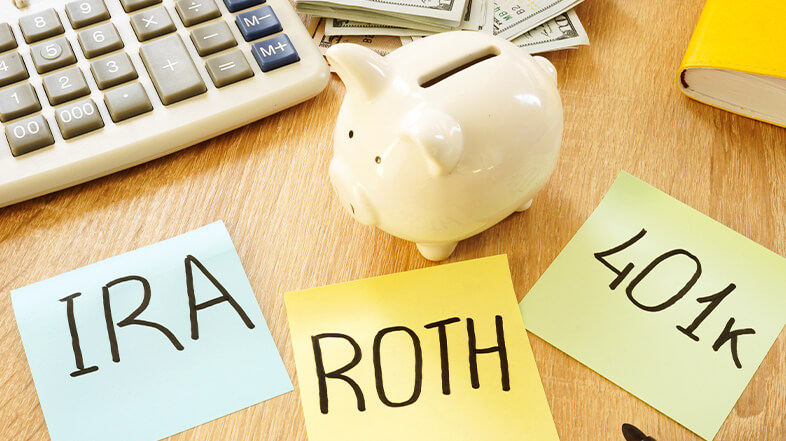
State of Retirement 2022: How Do You Measure Up?
Most people have been taught not to discuss money, but if we’re honest, we all want to take a sneak peek into one another’s bank accounts, saving accounts, and 401(k)s.
This isn’t because we have bad intentions. It’s simply because we want to know how we measure up.
Let’s consider the state of retirement. You know how much you have saved for retirement, but you probably wonder about other people your age. This is normal!
You want to know if you are on the right track, and comparing your account to someone else’s can help you figure out if you are where you need to be.
What we know for sure is you need to save for retirement – Social Security benefits will only get you so far.
In the biggest increase in benefits since 1982, Social Security recipients will receive a 5.9% increase in COLA (cost of living adjustment).¹
In 2021, the average retired worker in the U.S. earned $1,565 each month in benefits. After the 5.9% adjustment, the average retired worker will earn $1,657 a month.
Is this enough money each month for you to have the retirement lifestyle you hope for?
Probably not.
Additionally, the future of Social Security is uncertain.
According to the Social Security Administration, “As a result of changes to Social Security enacted in 1983, benefits are now expected to be payable in full on a timely basis until 2037, when the trust fund reserves are projected to become exhausted. At the point where the reserves are used up, continuing taxes are expected to be enough to pay 76 percent of scheduled benefits.”²
In other words, younger generations cannot count on Social Security benefits for retirement.
It’s up to you to protect your financial future and save for retirement.
But just how much should you save?
Let’s take a look at the industry statistics to determine the state of retirement in 2022 – and see where you measure up.
Total Household Retirement Savings among All Workers Is $93,000³
According to nonprofit Transamerica Center for Retirement Studies® (TCRS), “Despite six in 10 employed workers (60 percent) having made adjustments due to pandemic-related financial strain, 82 percent are saving for retirement.”⁴
The same study reports, “Eighty-two percent of workers are saving for retirement through employer-sponsored plans, such as a 401(k) or similar plan, and/or outside the workplace. Baby Boomers (84 percent) and Generation X (84 percent) and Millennials (82 percent) are more likely than Generation Z (70 percent) to be saving.”⁵
When it comes to how much they are saving for retirement, this is what they found: “Total household retirement savings among all workers is $93,000 (estimated median). Baby Boomer workers have the most retirement savings at $202,000, compared with Generation X ($107,000), Millennials ($68,000), and Generation Z ($26,000) (estimated medians).”⁶
Keep in mind that most experts suggest you need 80% of your final pre-retirement annual income to retire comfortably.
So if you make $100,000 a year, you need $80,000 a year in retirement income.
The median of $93,000 in retirement savings, therefore, is worrisome.
When it comes to saving for retirement, the most popular option is a defined contribution plan, such as a 401(k).
According to Vanguard, “Defined contribution (D.C.) retirement plans are the centerpiece of the private sector retirement system in the United States. More than 100 million Americans are covered by D.C. plan accounts, with assets now in excess of $9.6 trillion.”⁷
The average 401(k) balance was $129,157 in 2021, which is higher than the overall median for all types of retirement savings.⁸
Women Have Smaller Retirement Savings Overall
When it comes to the state of retirement 2022, women are still behind.
Women have smaller retirement savings overall, with an average of $57,000 saved, compared to men’s $118,000.⁹
Annuity.org states, “The amount of women who have more than $250,000 saved (24 percent) is 45 percent less than the amount of men with the same amount (35 percent). […] Nearly a quarter (24 percent) of women have $10,000 or less saved for retirement, compared to 14 percent of men in the same savings category.”¹⁰
Studies suggest that women are saving less for retirement because they do not prioritize saving for retirement as much as men, and few have a retirement strategy.
Younger Generations Are Starting to Save for Retirement Earlier
This is good news.
Transamerica Center for Retirement Studies® (TCRS) found, “Among those saving for retirement, Generation Z started saving at age 19, Millennials at age 25, Generation X at age 30, and Baby Boomers at age 35 (medians).”¹¹
The same study reports, “Baby Boomer workers have the most retirement savings at $202,000, compared with Generation X ($107,000), Millennials ($68,000), and Generation Z ($26,000) (estimated medians).”¹²
It’s important to note that many Baby Boomers were already mid-career when employee-sponsored 401(k)s became the norm, so they have been able to use a 401(k) as a retirement vehicle.
However, in the beginning, they had to save on their own, which is why they started saving at later ages.
Tips On How to Save More for Retirement
Considering the state of retirement 2022, you may be wondering how you can ramp up your retirement savings.
Fortunately, there are many ways you can boost retirement savings – no matter your age!
#1 Revisit Your Yearly Contributions

Employee 401(k) contribution limits for 2022 are $20,500. This applies to 401(k), 403(b), most 457 plans, and the federal Thrift Savings Plan.
For those age 50 and older, the 401(k) catch-up contribution is $6,500.
Given the contribution limit, it is understandable that many people won’t be able to contribute the maximum.
However, you should still try to contribute as much as possible.
Saving even a little bit more than you did last year can help you maximize your 401(k) performance.
What changes can you make in your budget to allow yourself to contribute more to your retirement savings? What can you cut in order to save more?
[Related Read: 7 Things That May Maximize 401(k) Performance in 2022]
#2 At Least Contribute the Company Match

If you can’t max out the annual contribution, make it a goal to at least put in enough to get the full company match.
Basically, contributing enough to get the full company match is getting free money!
Make sure you set up automatic withholding in the amount that makes you qualify for the company match.
[Related Read: 4 Ways to Potentially Maximize Your 401(k) Company Match]
#3 Avoid “Raiding” Your Roth IRA or 401(k)

According to Transamerica Center for Retirement Studies® (TCRS), “Thirty-four percent of workers have ever taken a loan, early withdrawal, and/or hardship withdrawal from their 401(k) or similar plan or IRA, including 25 percent who have taken a loan and 25 percent who have taken an early and/or hardship withdrawal. Millennials (44 percent) are more likely to have ever dipped into retirement savings than Generation X (33 percent), Generation Z (30 percent), and Baby Boomers (17 percent).”¹³
Using your 401(k) or Roth IRA for loans can be dangerous.
Borrowing from these accounts will cost you in the future.
It can impact the quality of your retirement, have negative tax consequences, and cost you money and opportunity.
[Related Read: 401(k) Loans: Stop Using Your 401(k) as a Bank]
#4 You Need More Money Than You Think

It is possible that you may need more money for retirement than you initially thought.
Yahoo Finance explains, “Average life expectancy is not a good way to plan for how much money you’ll need in retirement; many Americans live much longer than the average of 78.7 years, going well into their 80s or 90s.”¹⁴
This means that you may be looking at a longer retirement than generations past. Will you have enough money to last until you are 85 years old?
Not only are Americans living longer, but retirement costs are also going up.
Therefore, it is critical to evaluate your current retirement plan and make changes to ensure you are saving enough.
[Related Read: Are You Saving Enough to Cover These Retirement Expenses?]
#5 Get Professional Help

There is no shame in asking for help.
In fact, it is one of the wisest choices you can make for your financial future.
Recent studies show how Professional Account Management may improve your annual 401(k) account performance by 3% or more.
Use our 401(k) Calculator to discover your estimated account balance with professional help.
Check out our no-cost guide on how to understand The Different Types of Licenses Financial Advisors Have and What They Mean to You
Sources:
- https://www.ssa.gov/cola/
- https://www.ssa.gov/policy/docs/ssb/v70n3/v70n3p111.html
- https://transamericacenter.org/docs/default-source/retirement-survey-of-workers/tcrs2021_pr_four-generations-living-in-a-pandemic.pdf
- https://transamericacenter.org/docs/default-source/retirement-survey-of-workers/tcrs2021_pr_four-generations-living-in-a-pandemic.pdf
- https://transamericacenter.org/docs/default-source/retirement-survey-of-workers/tcrs2021_pr_four-generations-living-in-a-pandemic.pdf
- https://transamericacenter.org/docs/default-source/retirement-survey-of-workers/tcrs2021_pr_four-generations-living-in-a-pandemic.pdf
- https://institutional.vanguard.com/content/dam/inst/vanguard-has/insights-pdfs/21_CIR_HAS21_HAS_FSreport.pdf
- https://institutional.vanguard.com/content/dam/inst/vanguard-has/insights-pdfs/21_CIR_HAS21_HAS_FSreport.pdf
- https://www.annuity.org/retirement/retirement-statistics/
- https://www.annuity.org/retirement/retirement-statistics/
- https://transamericacenter.org/docs/default-source/retirement-survey-of-workers/tcrs2021_pr_four-generations-living-in-a-pandemic.pdf
- https://transamericacenter.org/docs/default-source/retirement-survey-of-workers/tcrs2021_pr_four-generations-living-in-a-pandemic.pdf
- https://transamericacenter.org/docs/default-source/retirement-survey-of-workers/tcrs2021_pr_four-generations-living-in-a-pandemic.pdf
- https://finance.yahoo.com/news/jaw-dropping-stats-state-retirement-000012342.html









